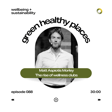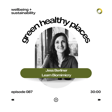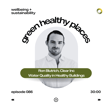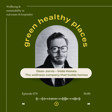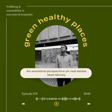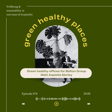
Carlo Battisti of Living Future Europe
Welcome to episode 66 of the Green Healthy Places podcast, in which we discuss the themes of wellbeing and sustainability in real estate and hospitality today.
I'm your host, Matt Morley, and today we're in Bolzano, Italy talking to Carlo Battisti, President of Living Future Europe.
Carlo qualified as a Civil Engineer from Milan's prestigious Polytecnico University and now specializes in sustainable innovation and project management. He is certified with LEED for green buildings, and WELL for healthy buildings, amongst a host of other professional accreditations.
Here we discuss the connection between biophilic design, beauty and wellbeing from the perspective of the International Living Future Institute.
We also look at the concept of restorative real estate developments, and even at how the Alto Adige - South Tyrol region of Italy that he is in has carved out a role for itself as a sustainable innovation hub within Italy.
This is a dense but extremely dynamic conversation. I really felt I was in the presence of someone who has completely mastered his art and is now committed to giving back to society by sharing that knowledge through a range of different mediums, including but not limited to podcasts!
GUEST: Carlo Battisti, https://carlobattisti.com/
HOST: Matt Morley, Biofilico healthy buildings

